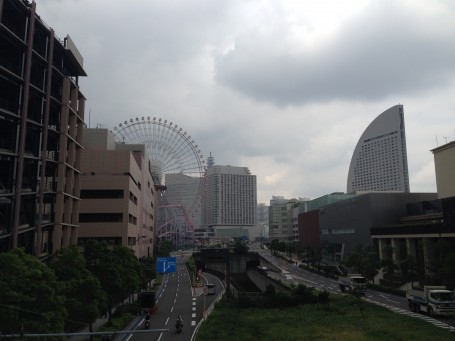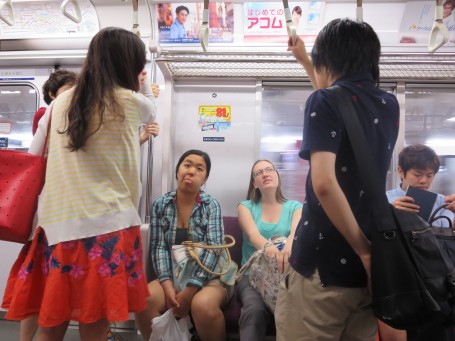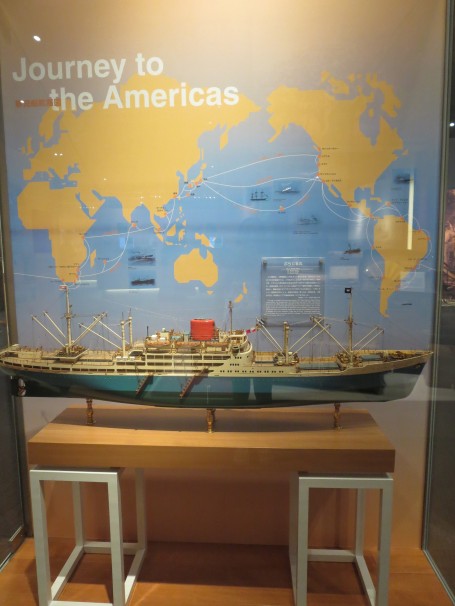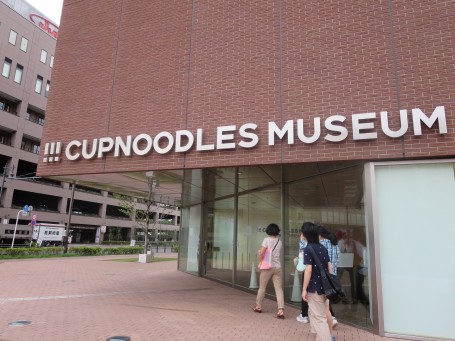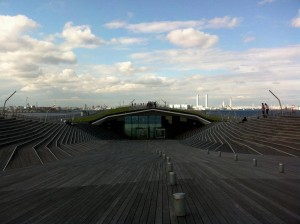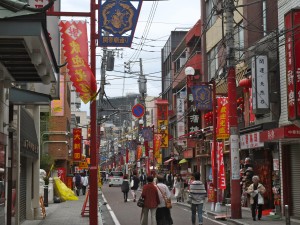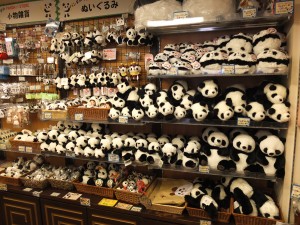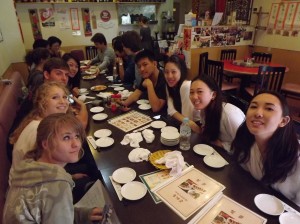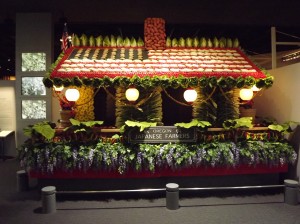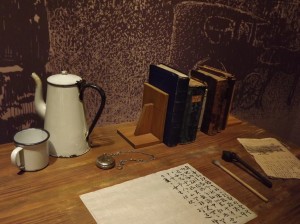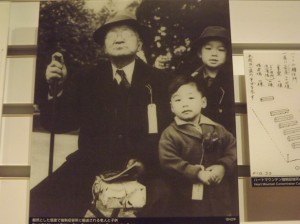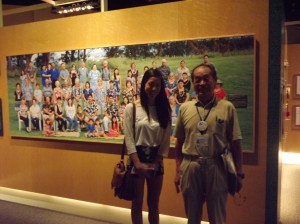by Natasha Cirisano and Stephanie Liang
Compared to Tokyo, our visit to Yokohama this Wednesday brought us into what seemed like a sleepier, smaller town that we could more easily navigate because it was not so dense and crowded. Instead, towering structures like several skyscrapers and a Ferris wheel served as landmarks that we could see from the street, while the highly condensed buildings and small alleyways of Tokyo seemed to close in on us. This new, quiet city contained lots of interesting sights, from the Emigration Museum to Chinatown to the famous Cup Noodles Museum, that we explored throughout our stay.
Our first Yokohama destination was the Emigration Museum, where we learned about the many stages of Japanese migration from the 1800s onward. We were surprised to see that passports existed even before there were photographs. Instead, the passport documents contained physical written descriptions of the people that held them! We were also interested in the fact that many Japanese settled in Brazil, of all countries, because the cultures seemed so vastly different. One observation our class made after our visit was that the tour guide felt the need to emphasize that these Japanese migrants were searching for ways to expand their experience and economic opportunity, not as deserters of their homeland. Later, we learned that the Japanese government gave false hope to migrants leaving the country in search of wealth, because it felt it could not support them, and that there have been efforts to rectify the way these immigrants were treated. This probably played into certain statements praising the migrants that were made in the tour. Since visiting the Japanese war museum near Yasukuni Shrine, we have been more sensitized to the variety of narratives and biases museums can have, and how they re-write history as much as they explain it.
Next, Chinatown in Yokohama fused Japanese and Chinese culture together. Having been to many Chinatowns in America, we noticed many differences between Chinatown in Japan and US Chinatowns. One of the biggest differences was the fact that many signs were predominantly written in Japanese Hiragana or Katakana. Many of the workers in the Chinatown restaurant we visited spoke Chinese, but were ethnically Japanese. The Chinatowns in America mostly consist of Chinese workers who sometimes speak only Cantonese or Mandarin. This led us to the conclusion that the Chinese population in Japan is not as dense as the Chinese population in America.

